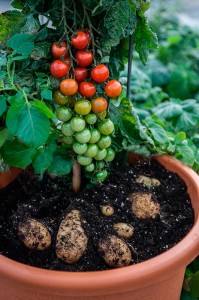MSU Extension:
Taking a soil test to determine nutrient levels in the soil for a garden area or lawn is a smart thing to do. Testing the soil can save you money on fertilizer costs because you know what is already supplied by the soil. You add only the nutrients needed for optimum plant growth and excess fertilizer doesn’t end up in groundwater, lakes or streams. Soil testing can be done any time the soil is not frozen.
For established plantings, you are monitoring changes in nutrients, pH and organic matter over multiple years. Organic matter content and pH impact nutrient availability in the soil. You will want to re-test the soil every three to five years or after major changes are made, such as adding lime to raise the pH or adding sulfur to lower the pH.

